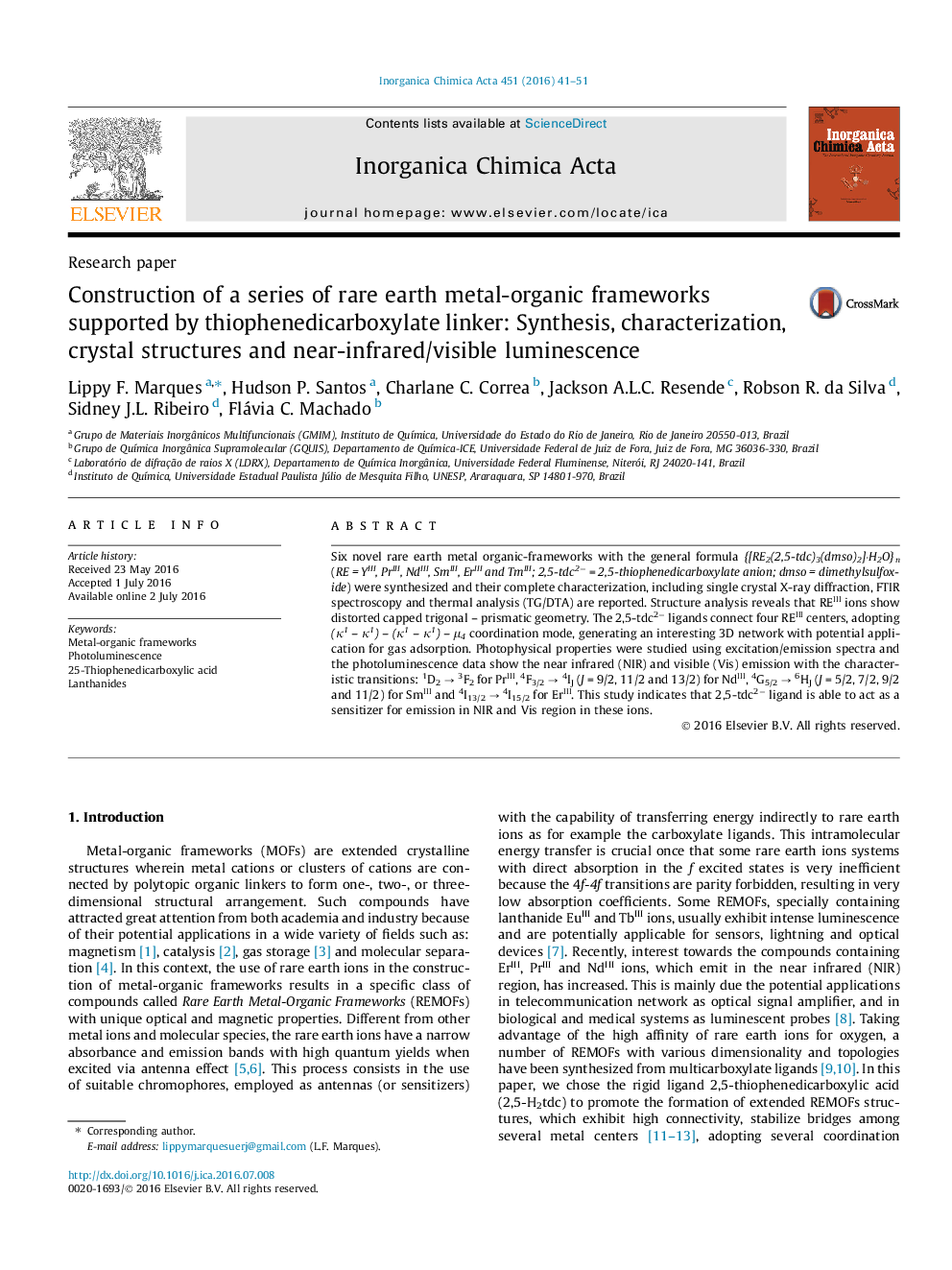| Article ID | Journal | Published Year | Pages | File Type |
|---|---|---|---|---|
| 1311924 | Inorganica Chimica Acta | 2016 | 11 Pages |
•Six new REMOFs were synthesized and fully characterized.•Photoluminescence properties these coordination networks were investigated.•Energy transfer mechanism for REMOFs has been performed.•An energy level diagram is used to establish the ligand-to-metal energy transfer.•These compounds can act as light conversion molecular devices.
Six novel rare earth metal organic-frameworks with the general formula {[RE2(2,5-tdc)3(dmso)2]·H2O}n (RE = YIII, PrIII, NdIII, SmIII, ErIII and TmIII; 2,5-tdc2− = 2,5-thiophenedicarboxylate anion; dmso = dimethylsulfoxide) were synthesized and their complete characterization, including single crystal X-ray diffraction, FTIR spectroscopy and thermal analysis (TG/DTA) are reported. Structure analysis reveals that REIII ions show distorted capped trigonal – prismatic geometry. The 2,5-tdc2− ligands connect four REIII centers, adopting (κ1 – κ1) – (κ1 – κ1) – μ4 coordination mode, generating an interesting 3D network with potential application for gas adsorption. Photophysical properties were studied using excitation/emission spectra and the photoluminescence data show the near infrared (NIR) and visible (Vis) emission with the characteristic transitions: 1D2 → 3F2 for PrIII, 4F3/2 → 4IJ (J = 9/2, 11/2 and 13/2) for NdIII, 4G5/2 → 6HJ (J = 5/2, 7/2, 9/2 and 11/2) for SmIII and 4I13/2 → 4I15/2 for ErIII. This study indicates that 2,5-tdc2− ligand is able to act as a sensitizer for emission in NIR and Vis region in these ions.
Graphical abstractNew rare-earth metal-organic frameworks of general formula {[RE2(2,5-tdc)3(dmso)2]·H2O}n (RE = YIII, PrIII, NdIII, SmIII, ErIII, TmIII; 2,5-tdc2− = 2,5-thiophenedicarboxylate anion; dmso = dimethylsulfoxide) were synthesized and their complete characterization, including single crystal X-ray diffraction, FTIR and DR spectroscopy and thermal analysis (TG/DTA) are reported. Photoluminescence data were obtained from the excitation and emission spectra. The energy transfer process in these complexes were studied.Figure optionsDownload full-size imageDownload as PowerPoint slide
